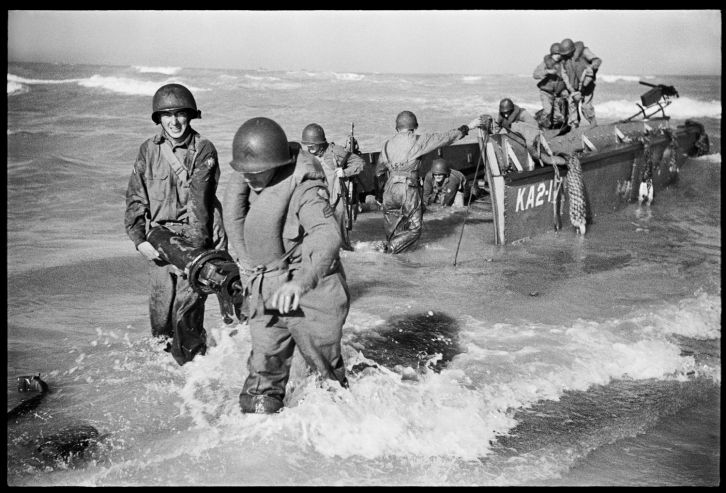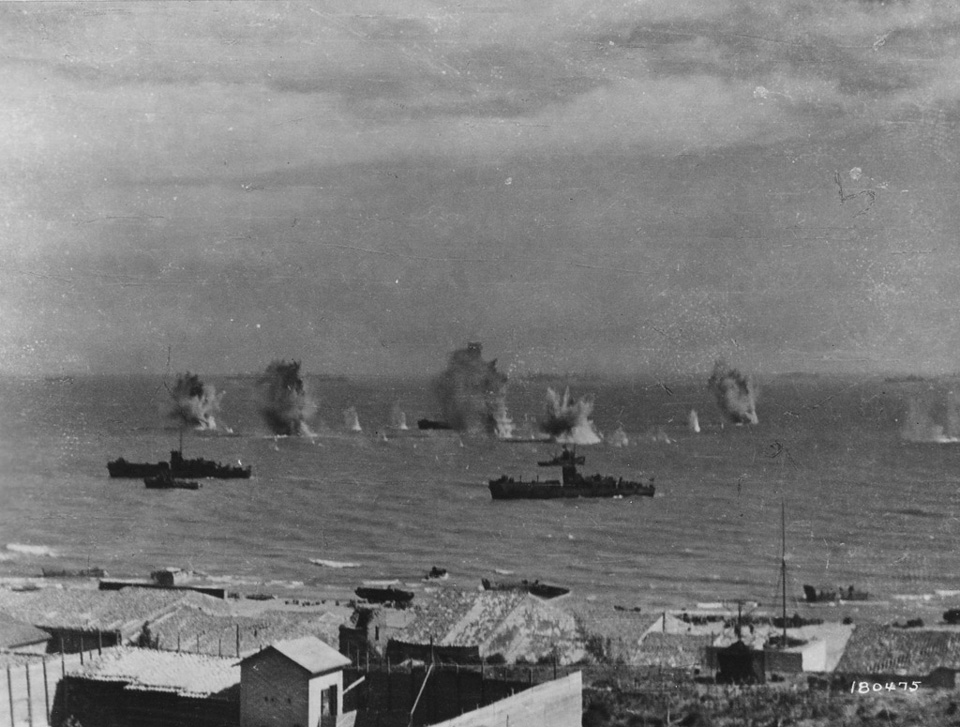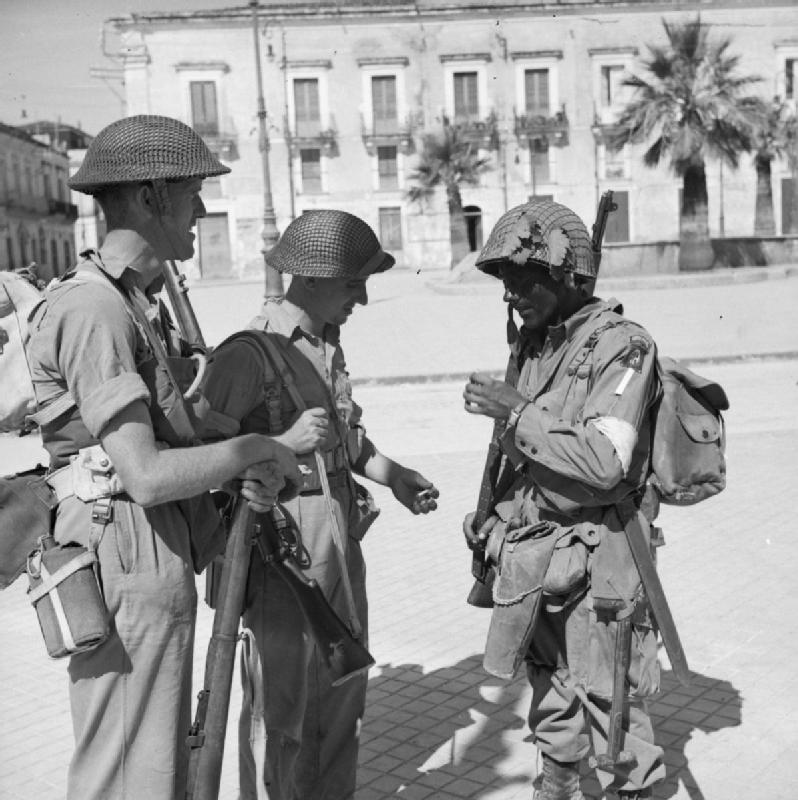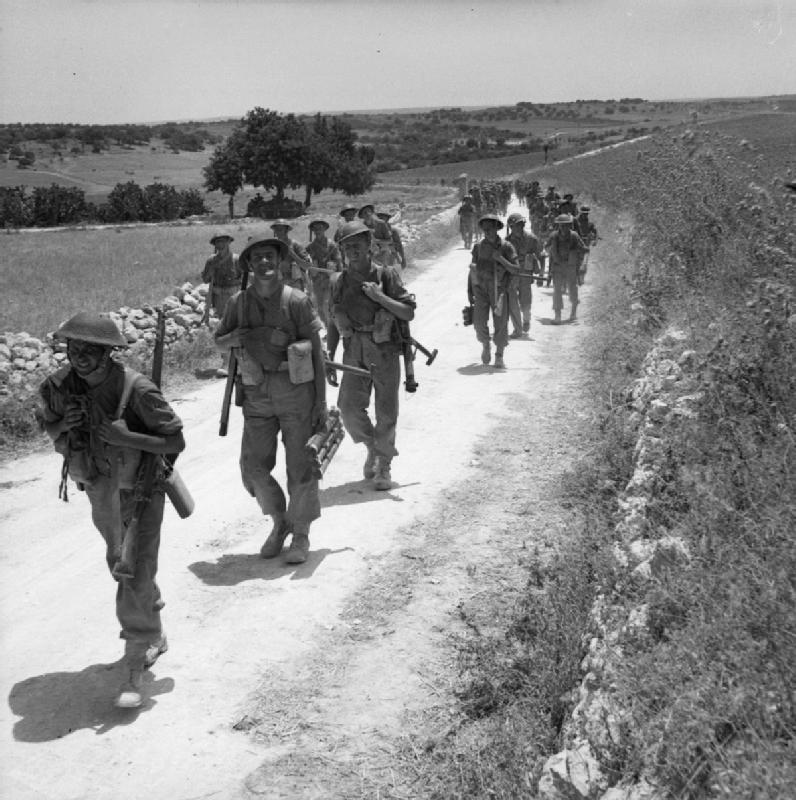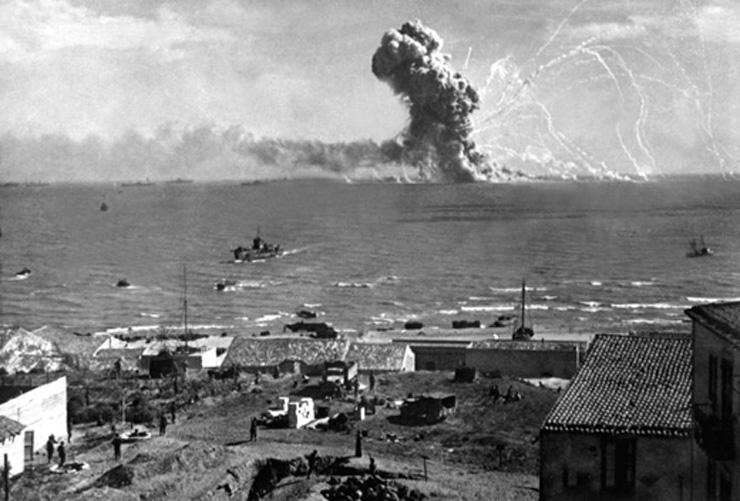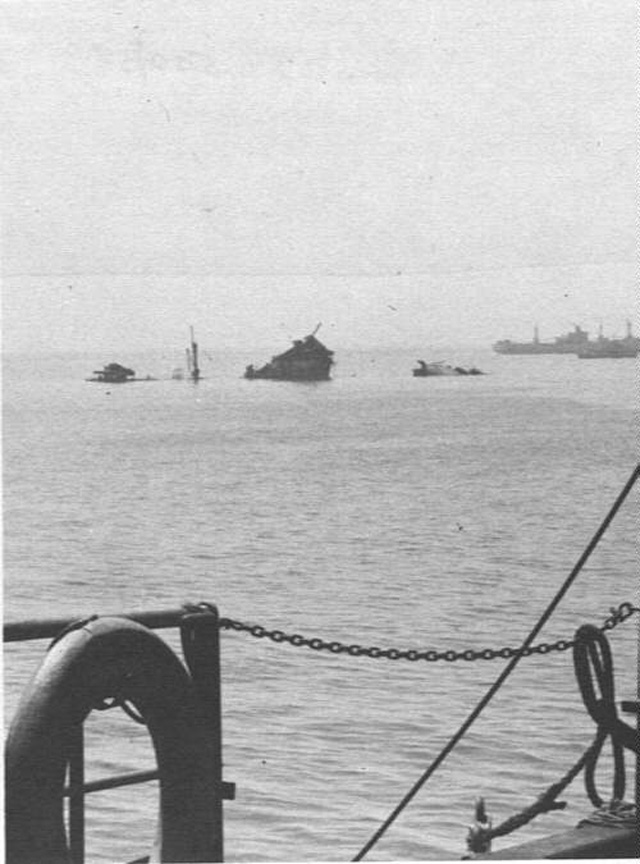Air Operations, Aleutians
6 28th Composite Bomb Group B-24s and 6 B-25s mount 3 attacks (including 1 radar-guided attack) against Kiska.
[Air Operations, Bismarcks
V Bomber Command B-17s and B-24s attack Rabaul-area airfields.
[Air Operations, CBI
CHINA- 8 308th Heavy Bomb Group B-24s attack barracks and troop emplacements at Kunlong.
- Several 7th Heavy Bomb Group B-24s and 3 308th Heavy Bomb Group B-24s attack the harbor area at Haiphong. 3 308th Heavy Bomb Group B-24s attack the port area at Campha. 23rd Fighter Group P-40s attack an oil depot at Lao Kay and road traffic between Lao Kay and Cha Pa.
Air Operations, East Indies
V Bomber Command B-25s attack Penfoei, Timor.
[Air Operations, Europe
US 9th AIR FORCEITALY:
IX Bomber Command B-24s attack the port area at Reggio di Calabria, directly opposite Messina.
[Air Operations, Gilberts
Three VII Bomber Command B-24s reconnoiter Little Makin Island in Makin Atoll, and 2 of the B-24s bomb the island.
[Air Operations, New Guinea
- V Bomber Command B-25s and A-20s attack Japanese Army ground troops and trails in the Nassau Bay area.
- 8th and 49th Fighter group planes down 3 A6M Zeros and 4 Ki-43 'Oscar' fighters around Salamaua between 1040 and 1045 hours.
Air Operations, Sicily
- NASAF B-17s attack the marshalling yards at Catania.
- NASAF B-26s attack the Gerbini Airdrome complex and the Trapani/Milo Airdrome.
- NASAF B-25s and P-38s attack the Sciacca Airdrome and a town.
- IX Bomber Command B-25s attack the Bo Rizzo and Trapani/Milo Airdromes as well as several area targets.
- Like the previous day, Axis air forces are again less aggressive in the defense of Sicily. 16 Axis aircraft are downed, half of which are Luftwaffe medium bombers.
- It is decided by the high command to conduct a reinforcement of an area threatened by a major Axis counterattack. Some 2,000 US Army paratroopers are assigned to the night drop which will be carried out from bases in North Africa to the vicinity of Gela by 144 C-47s from 4 troop-carrier groups under the control of the 52nd Troop Carrier Wing. A number of obstacles make the drop a disaster - strong head winds, the landing zone back under Axis control, and strong anti-aircraft fire from Allied ships. Aircraft losses are put at 23, but many crewmen and passengers in aircraft are killed or wounded by penetrating bullets and shrapnel. Half of the C-47s returning to Tunisia report heavy damage. Needless to say, the reinforcement is a lot less than was hoped.
Air Operations, Solomons
- XIII Bomber Command B-17s and B-24s attack the Kahili airfield on Bougainville.
- During the morning, VMF-221 F4Us down a Japanese Navy fighter near Vella Lavella and a G4M 'Betty' bomber near Munda Point. VMF-221 F4Us down a G4M 'Betty' and 4 A6M Zeros over Kula Gulf at noon. 1 VMF-214 F4U downs an A6M Zero over Guadalcanal at 1440. VMF-213 planes down 4 A6M Zeros between New Georgia and Kula Gulf at 1440 hours. 1 P-39 from the 347th Fighter Groupís 68th Fighter Squadron downs a Zero over Kula Gulf at about 1500 hours.
Eastern Front
The vicious fighting continues in the southern sector in the Battle of Kursk. The 4th Panzer Army and the Kempf Operational Group throw in all the forces at their command in a desperate attack on enemy positions at Prokhorovka. They succeed in taking several miles of territory, but lose 400 tanks. It is now more strictly a tank battle with the air and other supporting forces unable to intervene effectively. Visibility on the battlefield has become so poor because of dust and smoke that the Germans can make nothing of their advantage in long-range gunnery. The northern and southern points of the German forces are still very far apart, and they never get any closer. Von Manstein and von Kluge beg the Füher to call off the terrible costly Operation CITADEL, already doomed to failure. But they receive refusals.
German Soldiers Resting |
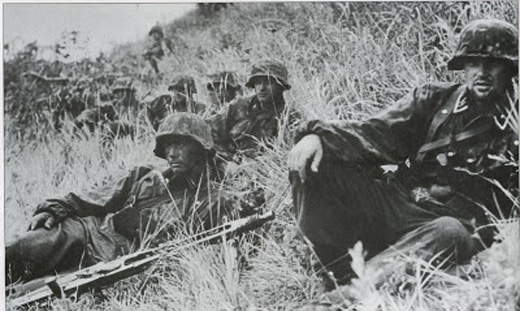 |
In the north of the Kursk salient, Model commits the 10th Panzergrenadier Div, which launches a series of desperate attacks at Ponyri. Although the Germans now hold most of the town, it is impossible to move forward as their losses have been too great, To the west, the Soviet XVII Guards Rifle Corps takes the full force of the German attack, especially around Hill 257. But agains the Germans fail to break through. The II SS Panzer Corps continues its advance, the Leibstandarte's panzers advancing along both sides of the Prokhorovka road supported by the Luftwaffe. Driving the elements of the already depleted Soviet II Tank Corps before it, the Leibstandarte Div is subjected to flank attacks and artillery fire. The SS division takes Hill 252.2 and pushes on to capture the Oktiabr'skii State Farm. The Leibstandarte has driven a wedge into the Russian lines in front of Prokhorovka, and II Tank Corps' defenses are in disarray. However, its losses have been heavy and it now has only 60 tanks, 10 assault guns and 20 self-propelled tank destroyers in working order.[MORE]
[
|
|
New Georgia
Mag-Gen Griswold, commander of the XIV Corps, and his staff arrive on Rendova Island to size up the situation. The Americans have encountered the Japanese main line of resistance along the hills and ridges. The center of the Japanese line is named Horseshoe Hill. A series of interconnected bunkers and pillboxes, 12 feet square and 10 feet deep, expertly camouflaged with rifle and machine-gun ports that provide interlocking lanes of fire, is supported by numerous spider holes and individual fighting positions for riflemen. Behind these positions are mortars that are targeted on selected areas intended to break up any organized attac. American supply lines are overstretched in the difficult jungle terrain. A battalion of the 169th Infantry becomes combat ineffective due to a large number of psychneurosis casualties.
[Pacific
- The US submarine Flying Fish (SS-229) sinks the Japanese gunboat No.8 Takatori Maru between Akino Dait Jima and Kazan Retto.
- The US submarine Gurnard (SS-254) attacks a Japanese convoy sinking the army cargo ship Taiko Maru (1925t) about 375 miles northeast of Palau.
Sicily
On the 8th Army front the British XXX Corps under Gen Sir Oliver Leese reaches Palazzolo and makes for Caltagirone, while in the Gen Miles C. Dempsey's XIII Corps sector the 5th Div, after taking Syracuse, continues to advance along the coast road towards Augusta almost unopposed. However, in the evening, at Priolo, halfway between Augusta and Syracuse, advance patrols meet the armored cars of the German Schmalz Group moving up from Catania, and are forced to retire.
The Americans are more seriously attacked, however. The Hermann Goering Pzr Div moves down toward Gela from its positions around Caltagirone. The Italians units' attack is repulsed almost immediately by fire from the Rangers and from naval guns, but the German tanks east of Gela reach the coast road only a mile from the sea. Here, however, they are pinned down by fire from American field guns and from the guns of the cruisers off the coast. The cruisers Savannah (CL-47) and Boise (CL-42) and 8 destroyers are providing the naval gunfire support. The American landings have suffered rather more than the British from the weather and few tanks and antitank guns have been landed. British battleships and cruisers are also in action shelling Favignana and Marsala during the night.
King George V and Howe bombard Favignana Island, west of Sicily. An Italian coastal battery prevents Allied destroyers from entering Augusta harbor. In continuing action over the next 3 weeks 7 German and Italian submarines are sunk and the Italian Bronzo is captured.
|
|
|
|
Damaged by a horizontal bomber of Licata, Sicily is the LST 158. It is later beached and abandoned. Also damaged by enemy air attacks during this day are the attack transport Barnett (APA-5), the transport Orizaba (AP-24) and the transport Monrovia (AP-64).
[ Poles Massacred in 3 Areas |
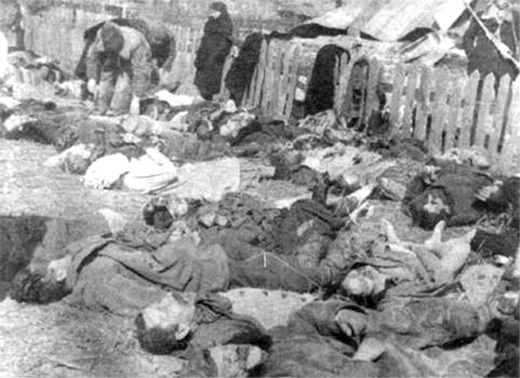 |
Solomons
There is a stalemate in New Georgia. The Americans' supply situation is becoming critical. A runway for fighter aircraft has been prepared at Segi Pont. Adm Halsey names Gen Vandegrift, just promoted to command the I Amphibious Corps of the US Marines, to direct the land operations for the capture of Bougainville, the last Japanese bulwark between New Georgia and New Britain, where the Japanese have their vital base at Rabaul.
Battle of Enogai, New Georgia Campaign |
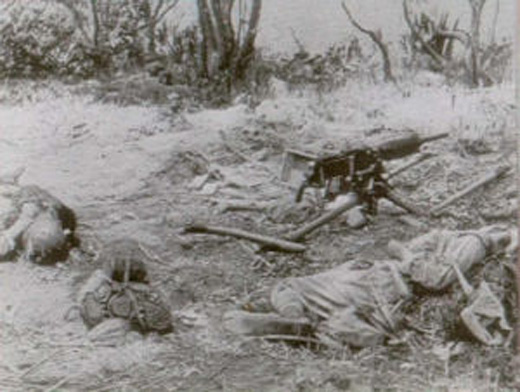 |
United States, Planning
Adm Halsey, COMSOPAC, issues a directive for an attack on Bougainville. Lt-Gen Alexander A. Vandegrift, commander of the I Marine Amphibious Corps, is tasked to lead the invasion. Bougainville, with its six airbases and 45-60,000 Japanese troops, represents the outer Japanese defense barrier protecting Rabaul, only 250 miles distant. Capturing the island and its airbases opens Rabaul to sustained attack.
[